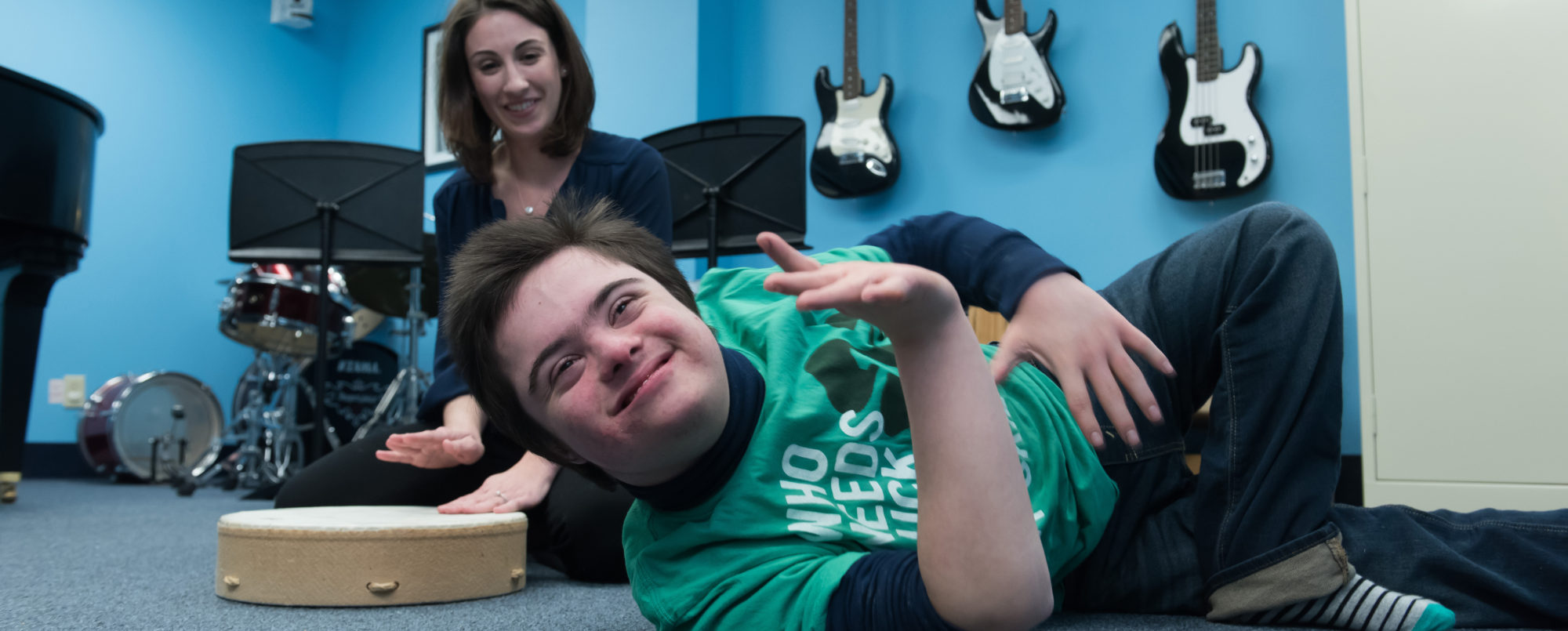Who can benefit?
 Our programs are individualized and specifically designed for children, adolescents, and adults with Autism Spectrum Disorders, Pervasive Developmental Disorder (PDD), Asperger’s Syndrome, Down’s syndrome, Attention Deficit Hyperactivity Disorder (ADHD), learning disabilities and other developmental or emotional challenges.
Our programs are individualized and specifically designed for children, adolescents, and adults with Autism Spectrum Disorders, Pervasive Developmental Disorder (PDD), Asperger’s Syndrome, Down’s syndrome, Attention Deficit Hyperactivity Disorder (ADHD), learning disabilities and other developmental or emotional challenges.
Musical Interventions: Engaging and Relating in Musical-Play
Various instruments, which require no prior skill or experience, are used by the client while the therapist improvises music, on the piano, guitar or via voice. The improvised music is built around the client’s reactions and musical responses in order to facilitate engagement and relatedness. Every response the client offers, either intentionally or reflexively, is followed and joined by the therapist in a musical context. The music therapist may develop musical improvisations that engage, match, support and enhance the client’s playing in order to facilitate musical relatedness and communicativeness. The therapist and client, together, develop various musical themes based on the client’s musical initiative. The musical themes may be brought back into following sessions to be developed in a co-creative and collaborative manner. Within the co-created musical themes, clinical goals and treatment plans are developed by the therapist. The approach is unique in its ability to follow the client’s “musical lead,” while considering his/her individual-differences, in order to facilitate robust back-and-forth interactions. In utilizing musical-play we are tapping into each client’s musical sensibilities, an area that is rarely, if ever tapped into in traditional education.
Goals May Include
Clinical goals are realized through the experience of interactive musical-play. Goals are music-centered as they pertain to social-emotional development and are geared towards developing and expanding the client’s ability to engage, relate, and communicate within the context of musical-play. Goal areas include: self-regulation, engagement, intentionality, relatedness, mutuality, problem-solving, adapting, and assimilating. In addition, sub-goal areas (objectives) may focus on supporting the client’s musical and individual differences – areas that may interfere with the client’s ability to relate and communicate in a purposeful and meaningful manner. These areas include: motor-planning skills, sensory modulation, visual processing, sequencing and organizational skills, expressive and receptive language, attention, frustration tolerance, self esteem, and sense of self and others.
Each of the social-emotional goal areas are assessed and supported through interactive musical interventions, and are described within five areas of musical responsiveness:
- musical attention
- musical affect
- adaptation to musical play
- musical engagement
- and musical interrelatedness

